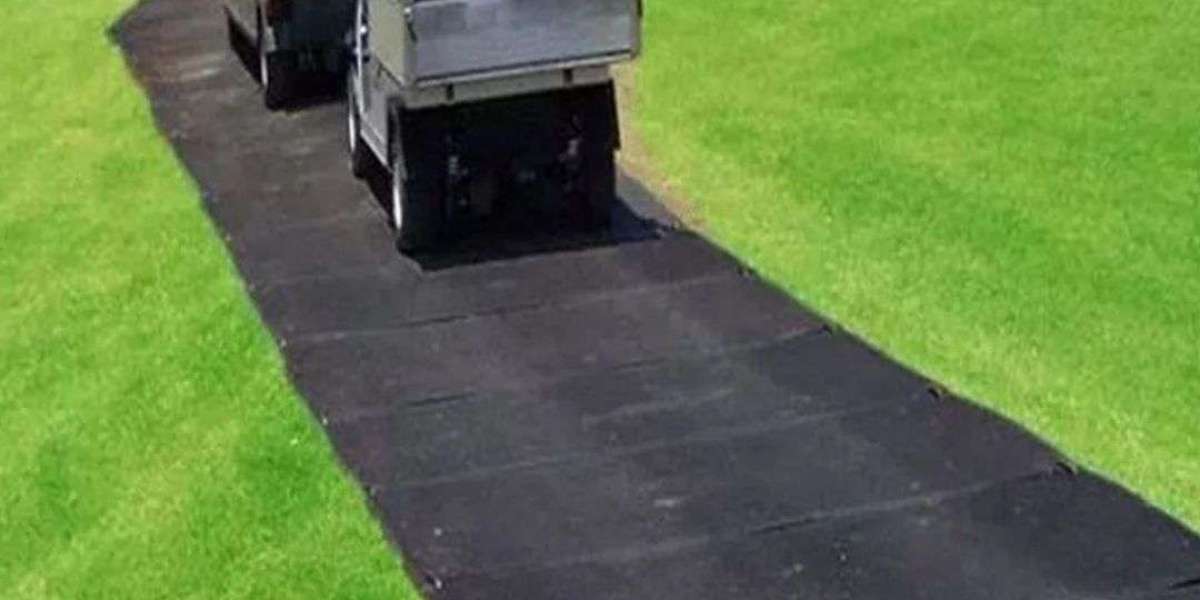HDPE ground protection mats are essential tools in various industries, providing a reliable solution for stabilizing soft or unstable ground. These mats are made from High-Density Polyethylene (HDPE), a material known for its durability and resistance to environmental factors. This article explores the features, benefits, and applications of HDPE Ground protection mats, emphasizing their role in enhancing safety and efficiency on construction sites and other demanding environments.
What Are Ground Protection Mats?
Ground protection mats serve as temporary surfaces that protect the underlying ground from damage caused by heavy equipment, vehicles, and foot traffic. They are particularly useful in construction, landscaping, and event management, where maintaining the integrity of the ground is crucial. The use of these mats helps prevent soil erosion, protects vegetation, and minimizes the risk of creating muddy or unstable conditions.
Features of Heavy-Duty Ground Mats
Heavy-duty ground mats are designed to withstand significant weight and harsh conditions. Some key features include:
- Material Composition: Made from 100% recycled HDPE, these mats are not only strong but also environmentally friendly.
- Weight Capacity: Many heavy-duty mats can support loads exceeding 80 tonnes, making them suitable for heavy machinery.
- Non-Slip Surfaces: The mats often feature specialized surfaces that provide traction for both vehicles and pedestrians.
- Ease of Handling: Equipped with hand holes and connectors, these mats are easy to transport, install, and connect together.
Benefits of High-Density Polyethylene Mats
The advantages of using HDPE mats over traditional materials like plywood include:
- Durability: HDPE mats do not warp, rot, or absorb water, ensuring a longer lifespan compared to wood alternatives.
- Cost-Effectiveness: While the initial investment may be higher than plywood, the longevity and reusability of HDPE mats lead to significant cost savings over time.
- Environmental Protection: By using HDPE instead of wood, companies can help reduce deforestation and pollution associated with logging practices.
- Versatility: These mats can be used in various applications—from construction sites to outdoor events—making them a flexible solution for ground protection.
Applications of HDPE Ground Protection Mats
The versatility of HDPE ground protection mats allows them to be utilized across multiple sectors:
- Construction Sites: Protecting soil from heavy machinery and preventing damage to nearby vegetation.
- Landscaping Projects: Providing stable paths for workers while minimizing disruption to the landscape.
- Events and Festivals: Creating temporary walkways that protect grass or other surfaces from foot traffic.
- Military Operations: Offering reliable access routes in diverse terrains without damaging the environment.
Installation and Maintenance
Installing HDPE ground protection mats is straightforward due to their lightweight nature and built-in connectors. Users can easily lay out the mats in desired configurations to create stable pathways or work areas. Maintenance is minimal; regular cleaning with water is usually sufficient to keep them in good condition.
Conclusion
In summary, HDPE ground protection mats are an invaluable resource for industries that require robust solutions for protecting surfaces during construction or events. Their combination of durability, environmental friendliness, and cost-effectiveness makes them a superior choice compared to traditional materials like plywood. As businesses continue to prioritize sustainability alongside efficiency, High-density polyethylene mats will likely play an increasingly prominent role in ground protection strategies across various sectors.
Frequently Asked Questions (FAQs)
What are the dimensions of typical HDPE ground protection mats?
Most HDPE ground protection mats come in various sizes; common dimensions include 4’ x 8’ (1220mm x 2440mm) and 3’ x 6’ (910mm x 1830mm). Custom sizes are also available based on specific project needs.
How much weight can HDPE ground protection mats support?
Heavy-duty HDPE ground protection mats can support loads ranging from 80 tonnes up to 120 tonnes depending on the mat's thickness and the condition of the underlying surface.
Are HDPE ground protection mats reusable?
Yes, one of the significant advantages of HDPE ground protection mats is their reusability. They can be used multiple times across different projects without significant wear or damage.


